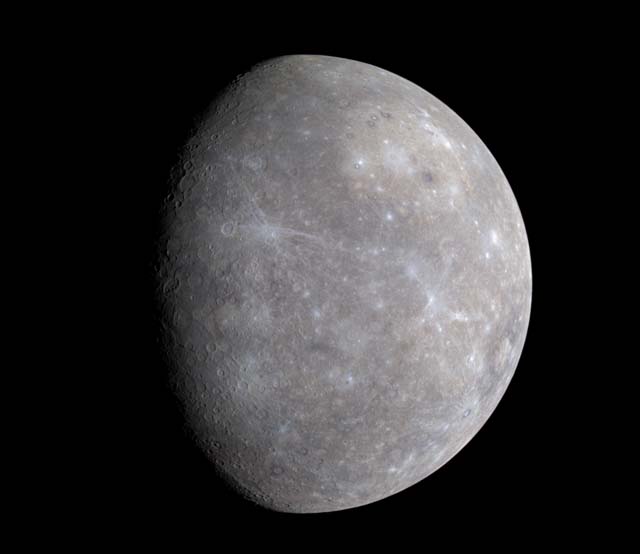[/caption]
Before Pluto was discovered, there were 8 planets in the Solar System; and Mercury was the smallest. And then in 1930, the discovery of Pluto brought that number up to 9. For most of the 20th century, scientists weren’t sure which was bigger, Pluto or Mercury. But accurate measurements helped scientists conclude that Pluto was the smaller planet. And then in 2006, astronomers voted to remove Pluto as a planet, and so we’ve got back to 8 planets. And once again, Mercury is the smallest planet in the Solar System. But let’s compare the dwarf planet Pluto and Mercury.
In terms of size, scientists now know that Mercury is significantly larger than Pluto. The diameter of Mercury is 4,879.4 km across, while Pluto’s diameter is 2,360 km across. So Mercury is about twice as large Pluto. And just for comparison, Pluto is only 18% the diameter of Earth, while Mercury is 38% the diameter of Earth.
When it comes to density, though, Mercury and Pluto are very different. Mercury is comprised of rock and metal, while Pluto is ice and rock. The density of Mercury is 5.427 g/cm3, while the density of Pluto is about 2 g/cm3. And since Pluto is smaller and less dense than Mercury, it has a much lower force of gravity. While you would feel 38% the force of Earth gravity standing on the surface of Mercury, you would experience only 5.9% of Earth gravity on Pluto. It would be extremely difficult to walk around the surface of Pluto without flying up in the air with every step.
Mercury is the closest planet to the Sun, orbiting at an average distance of only 57.9 million km, while Pluto orbit at an average distance of 5.9 billion km. Mercury completes an orbit in just 88 days, while Pluto takes 248 years to go around the Sun just once.
Mercury has no rings or moons, while Pluto has at least 3 moons (Charon, Nix and Hydra) and might even have faint ice rings; these could be generated by meteorite impacts on the surface of Pluto kicking up material into orbit around it.
There’s one big difference between the two worlds, though. It’s possible to see Mercury with the unaided eye. If you head out before sunrise, or after sunset and look to the horizon, you can see Mercury with your own eyeballs. Pluto, on the other hand, requires a very powerful telescope; and even then it’ll only look like a faint dot.
Another difference is the fact that Mercury has been visited by spacecraft from Earth. This has given us close up images of the surface of the planet. Pluto has never been seen up close. That’s going to change soon, though, when NASA’s New Horizons spacecraft arrives at Pluto in 2015 and takes the first close up images of the dwarf planet.
We have written many stories about Mercury here on Universe Today. Here’s an article about a the discovery that Mercury’s core is liquid. And how Mercury is actually less like the Moon than previously believed.
If you’d like more information on Mercury, check out NASA’s Solar System Exploration Guide, and here’s a link to NASA’s MESSENGER Misson Page.
Mercurio y Plutón
Source: NASA





